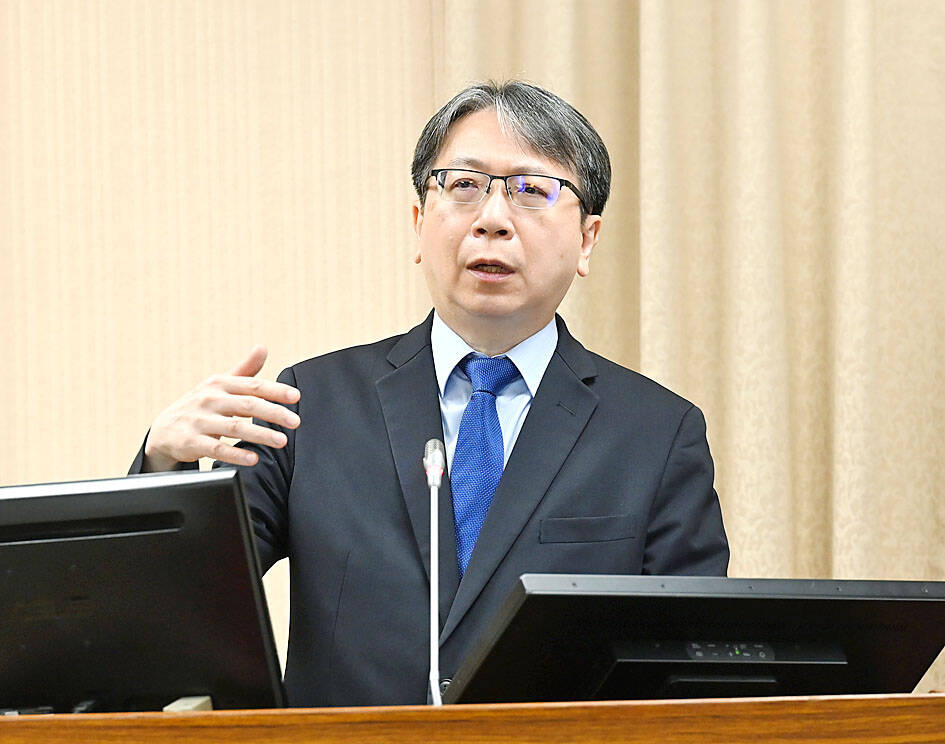China’s Taiwan Affairs Office (TAO) yesterday said that the Chinese man who drove a motorboat into a strategic river mouth in Taiwan on Sunday was acting on his own and would be punished upon his return to China.
However, the National Security Bureau said it would not exclude any possibilities regarding the man’s motivations, including the Chinese government’s involvement. The man has been identified as a 60-year-old former Chinese navy captain surnamed Ruan (阮).
Coast guard personnel on Sunday arrested Ruan in New Taipei City’s Tamsui District (淡水) after his boat entered Tamsui River (淡水河).

Photo: Wang Yi-sung, Taipei Times
The boat was detected off the coast of Taiwan on Sunday, but was not intercepted until it collided with other vessels at a ferry terminal on the river, which leads to the capital and flows into the Taiwan Strait.
Authorities have detained Ruan, and his apparent naval background has raised suspicions that the voyage might have been an attempt by China to test Taiwan’s detection and defense capabilities.
Speaking at a regular news briefing in Beijing yesterday, TAO spokesman Chen Binhua (陳斌華) said what Ruan had done was “purely his personal action.”
“There is no need for the Democratic Progressive Party authorities to see soldiers hiding behind every tree and bush, carrying out political manipulation while pretending to act earnestly,” he said.
Ruan would be punished once he returns to China, Chen added, without giving details.
Taiwan has not indicated when or if it would send him back, saying that legal authorities are still investigating the matter.
At the Legislative Yuan in Taipei, bureau Director-General Tsai Ming-yen (蔡明彥) said that Ruan’s apparent military background made the case rather unusual.
“There are many areas of doubt that still need to be further clarified,” he said.
Taiwan has said in recent years that China has been using “gray zone” warfare, which is designed to exhaust a foe by using irregular tactics without resorting to open combat, such as flying surveillance balloons over the nation.
Tsai said the speedboat incident might be just such a tactic.
Meanwhile, 22 Chinese People’s Liberation Army (PLA) aircraft and vessels were detected in the airspace and waters around Taiwan in the 24 hours after 6am on Tuesday, the Ministry of National Defense said.
Thirteen PLA aircraft were detected in the vicinity of Taiwan, two of which crossed the median line of the Taiwan Strait, while seven others, including one drone, crossed an extension of the median line and entered Taiwan’s southeastern and southwestern air defense identification zones, the ministry said.
The drone flew as close as 43 nautical miles (80km) from Oluanpi (鵝鑾鼻), Taiwan’s southernmost tip, ministry data showed.
Nine PLA vessels were detected in waters off Taiwan over the same period.
The ministry said that it was closely monitoring the situation and had deployed combat air patrol aircraft, coastal missile systems and navy vessels in response.
Additional reporting by Ben Blanchard

Chinese Nationalist Party (KMT) Chairman Eric Chu (朱立倫), spokeswoman Yang Chih-yu (楊智伃) and Legislator Hsieh Lung-chieh (謝龍介) would be summoned by police for questioning for leading an illegal assembly on Thursday evening last week, Minister of the Interior Liu Shyh-fang (劉世芳) said today. The three KMT officials led an assembly outside the Taipei City Prosecutors’ Office, a restricted area where public assembly is not allowed, protesting the questioning of several KMT staff and searches of KMT headquarters and offices in a recall petition forgery case. Chu, Yang and Hsieh are all suspected of contravening the Assembly and Parade Act (集會遊行法) by holding

PRAISE: Japanese visitor Takashi Kubota said the Taiwanese temple architecture images showcased in the AI Art Gallery were the most impressive displays he saw Taiwan does not have an official pavilion at the World Expo in Osaka, Japan, because of its diplomatic predicament, but the government-backed Tech World pavilion is drawing interest with its unique recreations of works by Taiwanese artists. The pavilion features an artificial intelligence (AI)-based art gallery showcasing works of famous Taiwanese artists from the Japanese colonial period using innovative technologies. Among its main simulated displays are Eastern gouache paintings by Chen Chin (陳進), Lin Yu-shan (林玉山) and Kuo Hsueh-hu (郭雪湖), who were the three young Taiwanese painters selected for the East Asian Painting exhibition in 1927. Gouache is a water-based

Taiwan would welcome the return of Honduras as a diplomatic ally if its next president decides to make such a move, Minister of Foreign Affairs Lin Chia-lung (林佳龍) said yesterday. “Of course, we would welcome Honduras if they want to restore diplomatic ties with Taiwan after their elections,” Lin said at a meeting of the legislature’s Foreign Affairs and National Defense Committee, when asked to comment on statements made by two of the three Honduran presidential candidates during the presidential campaign in the Central American country. Taiwan is paying close attention to the region as a whole in the wake of a

OFF-TARGET: More than 30,000 participants were expected to take part in the Games next month, but only 6,550 foreign and 19,400 Taiwanese athletes have registered Taipei city councilors yesterday blasted the organizers of next month’s World Masters Games over sudden timetable and venue changes, which they said have caused thousands of participants to back out of the international sporting event, among other organizational issues. They also cited visa delays and political interference by China as reasons many foreign athletes are requesting refunds for the event, to be held from May 17 to 30. Jointly organized by the Taipei and New Taipei City governments, the games have been rocked by numerous controversies since preparations began in 2020. Taipei City Councilor Lin Yen-feng (林延鳳) said yesterday that new measures by